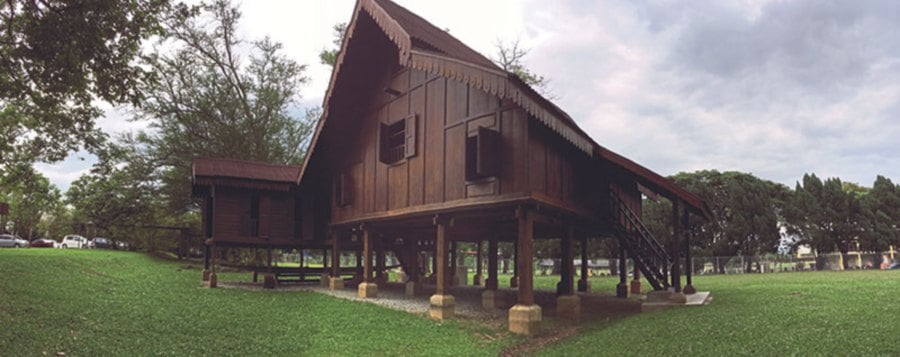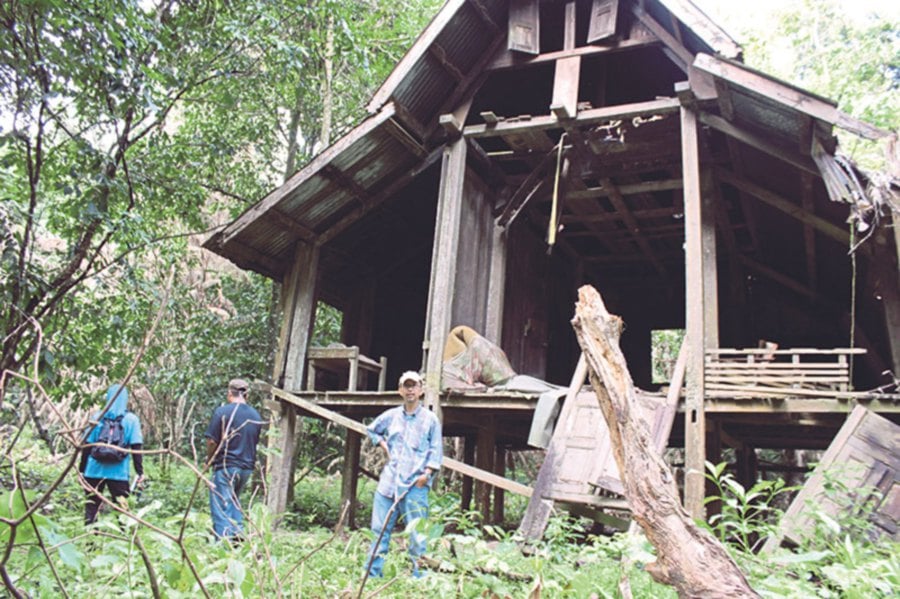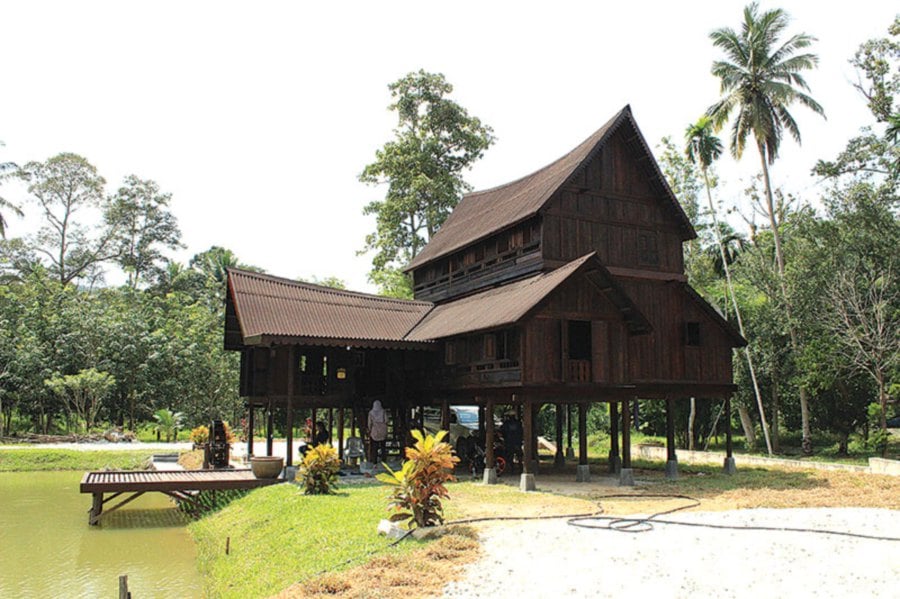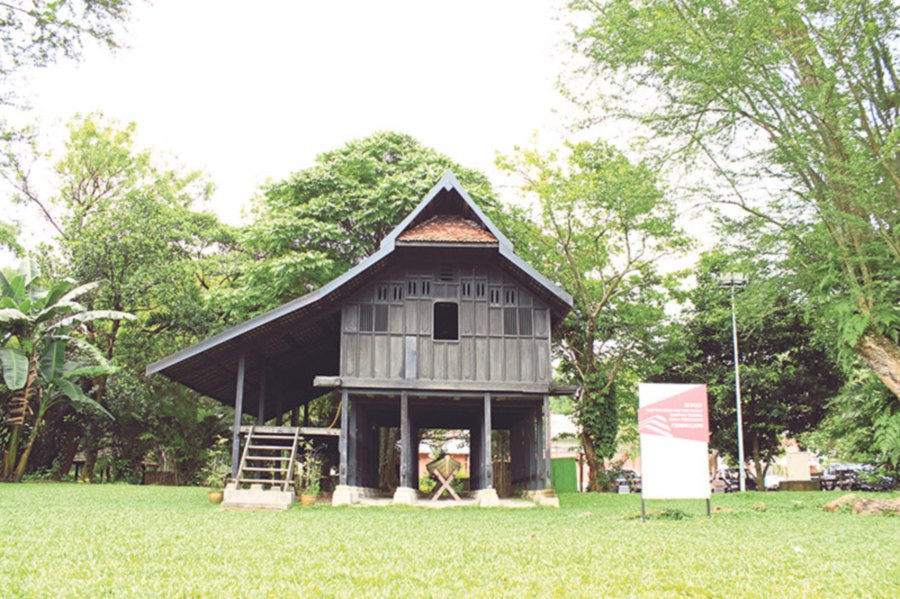
SITTING on the verandah of the Pahang House he restored in 2016, Prof Dr Muhammad Pauzi Abdul Latif looks thoughtful. As he gazes out at the green landscape beyond, he says: “I’m not quite sure how this started. ...this adventure in locating traditional Malay houses all over the country. I just knew I had to do something to rescue this beautiful part of our heritage.”
A lecturer in Communications at Universiti Putra Malaysia (UPM), Pauzi as he’s fondly known, is an avid collector of ancient Malay World artefacts, a hobby which turned into a full-blown vocation.
A lover of traditional craftsmanship, he’s also passionate about restoring traditional houses — his inherent interest and love for woodcraft cultivated by observing his boat maker grandfather at work.
As director of the Malay Heritage Centre at UPM, Pauzi’s interest lies in the function, story and heritage value of his collection as well as the traditional architecture he painstakingly restores to original splendour. The story behind these houses unveils a time long past, resplendent with cultures and lifestyles that’s swiftly dissipating from our memories.
“There must be many tales that can be told about this Pahang House,” muses Pauzi. “It’s so well-made and survived two great floods, one which occurred in the 1970s and the other, 40 years later.
“Built in the style of Rumah Serambi Pahang in the early 20th century, it once belonged to Ismail Khatib Bakar, the village chieftain of Kampung Kelola, Jerantut.”
He continues to postulate: “This is one of the few houses I know that comes with a balai (hall), a section where the Penghulu or village chieftain conducts his business with the village folk. I’d imagine the men having meetings in the balai while the women of the house busied themselves at the back preparing delicious meals and kueh (traditional desserts) for tea.”
He recalls that while clearing the house for restoration work, they stumbled upon a lovely baju kurung belonging to a young girl, complete with a simple solid gold neck fastener. “When I sit quietly in the corner of this house, I can almost imagine the past coming back to life,” he says, half-wistfully.

THE TRADITIONAL MALAY HOUSE
The traditional Malay house has existed for as long as anyone can remember. Embodying the kampung (village) atmosphere, it’s often associated with a home that’s full of merriment and family cheer.
The house is almost always surrounded by a spacious compound called laman, which is really an extension of the house itself. This is the place where people gather, children play after school and where livestock like chickens, duck, geese and even goats, wander freely. During festive occasions such as weddings, kenduris or Hari Raya, preparation of food like lemang (glutinous rice cooked in coconut milk in hollowed bamboo lined with banana leaves) and wajik (a sweet glutinous rice dessert) is carried out in the compound.
Unfortunately, well-maintained thatched-roofed Malay houses are few and far between, and rarely built today. As such, the kampung scene described above is fast fading. However, Pauzi discloses that there are still masters, albeit only a few, specialising in traditional Malay architecture. In recent years, however, appreciation of traditional Malay houses has increased as owning such a property is perceived as a symbol of wealth and status due to the fact that prices of these houses have skyrocketed due to their rarity.

Pauzi, together with his wife, Latifah Nor Mahat have been rescuing old Malay traditional houses since 2008, assembling the architectures on their family land they call Seri Siantan.
His passion is not restricted to houses alone; he’s gone on to restoring traditional mosques as well. “I often look at the history and unique architectural decoratives like wood carvings. The structure must be at least 80 per cent intact but luckily old buildings those days were built to last, and often have good foundations. In fact, those built with cengal wood in particular, can last for a century or even longer,” he explains.
UPM has fully supported his efforts. In 2012 the university showcased its first traditional house from Negri Sembilan at the Malay Heritage Centre. To date, the centre has a collection of four traditional houses: Rumah Beranjung from Negri Sembilan, Rumah Kutai from Perak, Rumah Bujang Selasar from Terengganu and Rumah Serambi from Pahang.
All the houses were dismantled at the original site and put together at the centre’s compound known as Kampung Warisan. While both the Negri Sembilan and Pahang houses belonged to village chieftains, the house from Perak (Rumah Kutai) belonged to a Malay warrior, Uda Noh Kanda Jaafar.

WELL DESIGNED AND PRACTICAL
In the course of restoring old architecture, Pauzi discovered the many advantages these houses had. Not many people know that Malay traditional houses apply the modular concept of easy assembling and dismantling. They can be easily transported from one location to another. He explains that the construction was greatly systematised with a high degree of flexibility and variation, and the houses were often built without the use of nails. “Pre-cut holes and grooves were used to fit the timber elements into one another, akin to modern prefabricated homes of today,” he discloses.
The traditional house was designed to suit the warm and humid Malaysian weather. Fenestration features, especially floor-to-ceiling windows and wide open doors, allowed sufficient air flow to cool the interior. Louvres and vents under the roof served the same function. These houses built on stilts further allowed good air flow throughout the entire structure.
Primarily made of wood, the architecture often showcased the wealth of the owners. “The more affluent the owner, the more he’d invest in the aesthetic aspects of the house, including wood carvings on doors and gables, and beautiful wooden balustrades to decorate windows, staircases and verandahs,” explains Pauzi.
With so many elements to retain and feature, restoring a traditional home involves a systematic but detailed process.
The house must first be obtained legally after being identified and assessed and a dilapidation study conducted. Once dismantled and carefully labelled, the pieces are moved to a new site where they’re cleaned and repaired where necessary. Once the structure is reassembled, the finishing touches, including varnishing, are carried out.
Pauzi is no longer alone in his quest. There are a growing number of enthusiasts keen to revive interest in the traditional Malay house. This has evolved to be a movement and a lucrative venture for some, including Alex Lee of Terrapuri from Terengganu and the Bon Ton Resort in Langkawi.
Adiguru Ukir Kayu or Master in Woodcarving, Norhaiza Noordin, restores houses at Bakawali Sari Ukir in Kampung Raja, Besut, while renowned architect Hijjas Kasturi has his Rimbun Dahan project in Kuang, Selangor.
Many years back, Datuk Rudin Salinger’s beautiful handmade house, Rudinara, won the prestigious Aga Khan Architecture award. It was built using the techniques employed in the construction of the traditional Malay house of yesteryear.

Sitting under the shade of the house he’d painstakingly rebuilt, Pauzi concludes: “It’s my ultimate dream that the current revival of these beautiful houses will be sustainable enough to make a difference.”
A faraway look in his eyes, he continues to gaze at the green laman outside, perhaps imagining a day when his beloved traditional houses would be an integral part of the modern Malaysian identity, offering a haven of bliss and beauty that will be known and appreciated both locally and worldwide.

